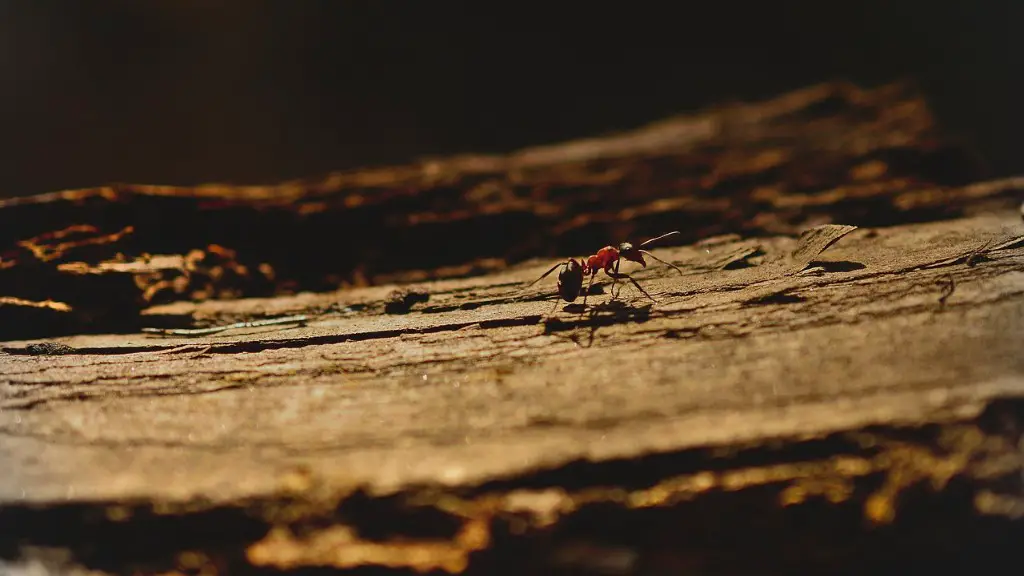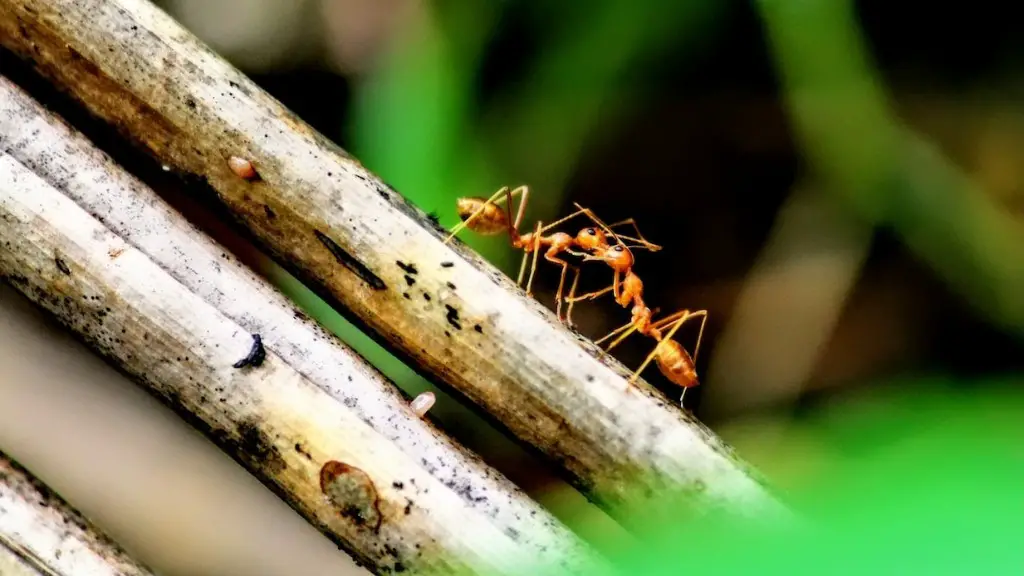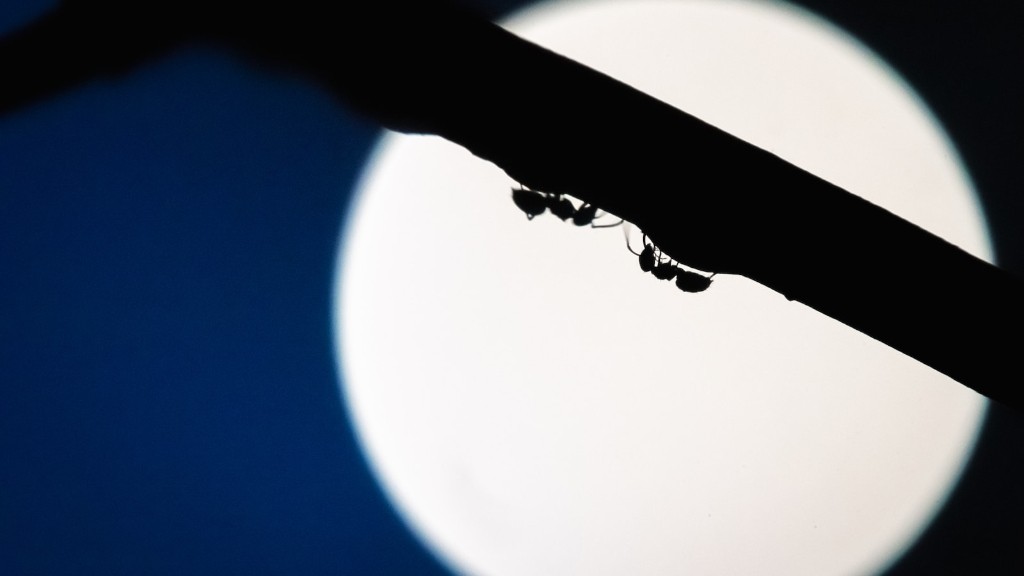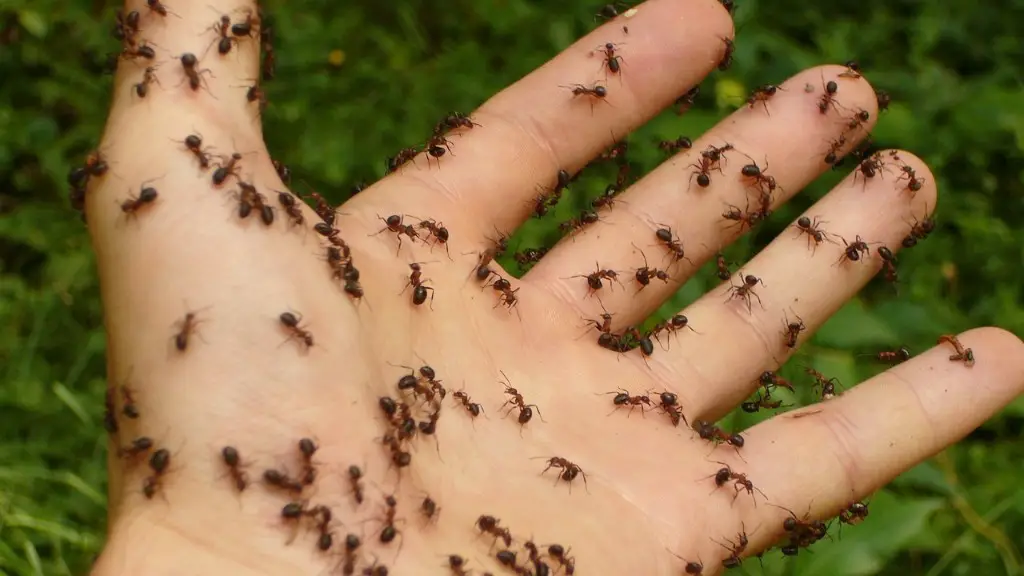Setting Traps for Ants
Ants are a nuisance and getting rid of them from your home can be complicated. The best way to remove ants from your property is to set traps. According toexpert Wilma Bergen, an agricultural entomologist, setting traps involves a combination of baits, obstructions, and mechanical methods. There are several stores that sell these types of traps and they can be used to capture a wide range of ant species. Traps provide a reasonable means of dealing with small to large colonies.
Once the traps are set up, they must be checked daily and reset or replenished as needed. Traps should be placed against walls or around baseboard corners as ants tend to travel alongside walls or across floors. Some traps come with a sticky substance on their surface that can help capture ants. Other types of traps come with baits that ants are attracted to.
It is important to remember that it is the baits that lure the ants in, and different kinds of ants respond to different kinds of attraction. For instance, sweet baits usually attract sugar ants. However, some sugar ants are more attracted to proteins and grease. To find out which bait would best attract the ants in your home, it is important to identify the type of ant infestation first.
Once the type of ant is identified, the appropriate bait should be placed in the trap. It is also recommended not to overload the traps with bait as it can lure in other ants that aren’t necessarily a problem. Furthermore, traps should be placed out of reach of pets and children in order to avoid any potential harm. For a small to moderate sized colony, traps may be set up around the perimeter of your home once the type of ant has been identified.
Creating a Barrier
Another way to keep ants out of your home is to create a barrier. Asexpert John Lee, an entomologist and biologist, explains, using a barrier is the most effective way to deal with ants in the long term. It requires some patience and extra effort, but it is worth it in the end.
To create a barrier, the most common method is to spray a citrus or tea tree oil solution on the entrance points of your home. Citrus oil solutions have a strong smell that will repel ants, while tea tree oil solutions can have a long-lasting effect.
Creating a barrier also involves sealing up the entrances to your home. You can use steel wool to block crawl spaces and holes along the base of walls, and caulk or foam to seal along window sills and door frames. Make sure to check for cracks and crevices around your windows and doors and get rid of any ant nests that may be around the outside of your home.
Natural Solutions
For those who prefer to use natural solutions, there are several methods that can be used. As expert Jen Hillen, an environmental specialist, advocates for using natural solutions to discourage ants from entering your home.
For instance, one option is to use vinegar and water to clean your counter tops. Vinegar is known to be a natural insect repellent and can disrupt the pheromone trails that ants like to follow. Additionally, it is important to promptly clean up food spills as ants are attracted to them.
Another option is to sprinkle a combination of salt and black pepper to discourage ants from entering. This will help hinder the line of ants and create an unpleasant sensation on their feet. Additionally, cinnamon is a natural ant repellent and can be used in the same way. Sprinkling cinnamon around the edges of windows and doors or wherever a line of ants have been seen can help to keep them away.
Insecticides
Finally, for those who want a quicker solution, insecticides can be used. According toexpert Ava Taylor, an entomology specialist, insecticides should be used with caution and as a last resort. The best types of insecticides are those that contain natural ingredients such as pyrethrin. These types of insecticides are not as toxic compared to other compounds and won’t leave behind a residue.
Before using an insecticide, it is important to closely read the instructions on the package and follow safety precautions. Additionally, it is important to note that insecticides may kill the ants initially, but they do not prevent further infestations. For this, it is necessary to create a barrier or use natural solutions as described above.
Eliminating Water Sources
Removing water sources is also essential in getting rid of ants. This includes cleaning up moisture-prone areas such as leakage spots and pooling water caused by faulty air conditioners or drain blockage. Additionally, it is important to keep the area free of food scrap and litter. Keeping a clean home is essential not only to get rid of ants, but to generally promote good health for everyone in the home.
People should also be mindful of their pets. Pets should be regularly groomed and their dishware should be frequently cleaned and sanitized. Water dishes in particular should also be regularly cleaned as ants will be more likely to come near a place where there is easy access to water.
Eliminating Nest Sites
The next step towards eliminating ants is to get rid of potential nesting sites. Ants will usually nest in dark, isolated areas such as underneath rocks and logs, sunken trees, and within cracks and crevices. In order to get rid of these nesting sites, people need to be thorough in their search, and introduce measures to prevent ants from accessing these areas, such as sealing up cracks or holes with caulk.
Also, it is important to monitor the outside of the home for any nests or trails. If a nest is found, it should be carefully removed and the area should be sprayed with an insecticide. It is important to remember that some species of ants are able to enter quickly indoors, so people must be on alert constantly.
Encouraging Beneficial Insects
Finally, encouraging beneficial insects from the environment is also a great way to get rid of ants. Beneficial insects such as ladybugs, lacewings, and predatory mites can help get rid of ants by preying on them. These insects are attracted to areas that contain flowering plants and many of them can be bought commercially.
It is important to create an inviting environment for these insects by providing ample food sources, including pollen and nectar. People can also introduce beneficial bacteria into the environment which can help remove food sources that ants may be attracted to. Beneficial bacteria can be found in food sources such as apples and onions.
Adopting Preventative Measures
The best way to keep ants away from your property is to adopt preventative measures. This includes keeping food and water sources clean and sealed, clearing up food and odorous items, eliminating potential nesting sites, sealing up windows and doors, and using insecticides when necessary. Additionally, people can also encourage beneficial insects and introduce beneficial bacteria into the environment in order to discourage ants from entering.
In order to best remove ants from your home, it is important to be patient and persistent with your efforts. Traps should be set up correctly and checked daily, while natural solutions and preventative measures should be used consistently. Additionally, it is important to identify the type of ant infestation present in order to choose the most effective baiting approach.
Identifying Potential Entry Points
An essential part of removing ants is to identify potential entry points. Ants have a variety of ways they can enter a property and some of them may be less obvious than others. This can include holes along the baseboard walls or under door frames. It is important to look for these cracks and crevices as well as for any other openings that may provide ants with access to your property.
Once potential entry points are identified, people should undertake measures to block up the access with steel wool or caulk. This will help to keep ants from entering in the first place. Additionally, it is important to keep the area around your house clean and litter-free. This will minimise the chances of ants from coming close to your home in the first place.
Using Repellents
In addition to using traps and barriers, repellents can also be used to keep ants away. Asexpert Marilyn Koe, an entomologist explains, repellents can be used on their own or in combination with traps and barriers. Repellents are substances that create an unpleasant scent or sensation that repells the ants from entering. Some common household items can be used to repel ants, such as peppermint oil, cloves, and vinegar.
However, it is important to remember that repellents don’t kill the ants, they just discourage them from entering. Thus, it is important to also seal up any entry points or create a barrier in order to keep the ants out in the long-term.
Using Baiting Techniques
For those who want to target specific ant species, baiting techniques can be used. According toexpert Susan Smith, a pest control professional, this involves targeting the colony directly. This can be done by using slow-acting substances such as boric acid. These substances are usually more effective as they give the ants time to carry the poison back to their nest.
Baiting techniques also require patience as it may take a few weeks for the bait to take full effect. Furthermore, it is important to identify the type of ants present in order to choose the appropriate bait. There are several baiting methods available and it is important to be aware of their pros and cons in order to select the most effective one.
Insecticides Sprays and Foams
Finally, insecticides can also be used to get rid of ants. Insecticides are substances that are toxic to both ants and humans and hence should be used with caution. One thing to consider when using insecticides sprays and foams is to make sure they are used only on designated surfaces in order to avoid any potential harm.
Insecticides should also be chosen with care, and the best option is usually the one that contains natural ingredients. Additionally, the instructions on the package should be followed precisely in order to ensure their effectiveness.
Using Heat Treatments
Using heat treatments can also be used to get rid of ants. This involves using a heatgun in order to kill ants infesting the area. Heat treatments can be an effective and efficient way to eradicate ants as the heat gun emits temperatures that are higher than ants can withstand.
This method of ant removal is best used when targeting small to medium sized colonies. This method should not be used in larger areas as the heat generated by the gun could be dangerous. Additionally, safety measures should always be taken when using heat treatments, such as wearing protective clothing.
Using Insect Growth Regulators
Insect growth regulators can also be used to get rid of ants. These substances contain chemicals that interfere with the ant’s normal growth and development cycle, thereby making them less able to reproduce. They can be used to target smaller colonies and are usually more effective when combined with other methods such as barrier and baiting techniques.
However, since insect growth regulators do take some time to take effect, it is important to be patient and persistent with their use. Additionally, it is important to follow the instructions on the package in order to ensure their effectiveness.
Using Pest Deterrents
Finally, pest deterrents can also be used to get rid of ants. These are substances that create a repellant odour that ants don’t like. Most of these pest deterrents are odourless to humans and can be used safely around the home.
They can be an effective way to get rid of ants without the need for insecticides. However, it is important to remember that these deterrents do not kill the ants; rather, they just discourage them from entering the property. As such, it is important to always couple these deterrents with other ant removal practices.



